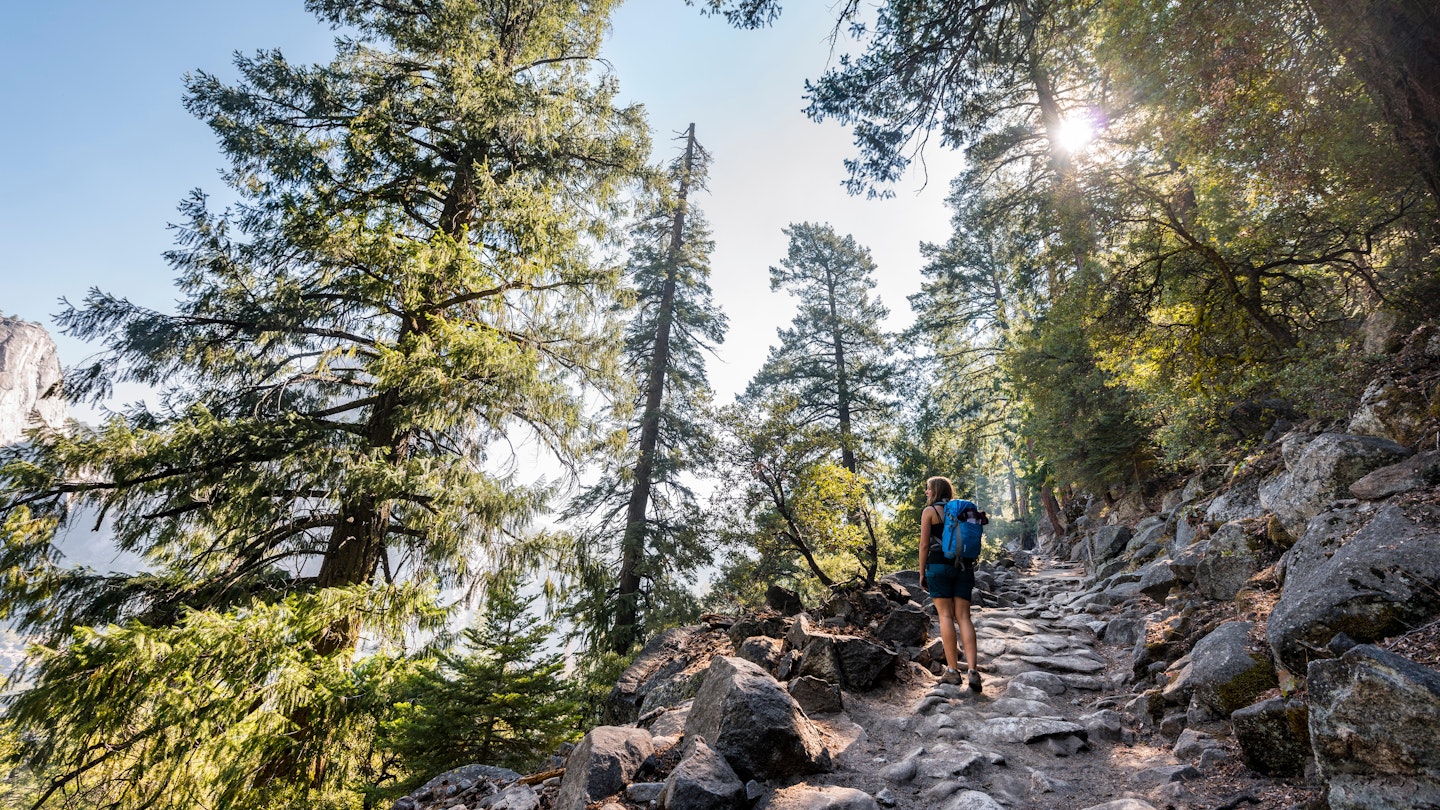Hiking and camping are great ways to get outdoors. Adventures on foot can be as big and remote or tame and close-to-home as you want them to be. With basic gear, a game plan, common sense, and some research, you can discover the joys of being in the company of nature.
1. Don’t Start Off Too Fast
Keep stress low by hiking near where you live. Start with a shakedown hike that takes two hours or less. Then, if you want a challenge, lace up for a hike with some elevation. Build hiking fitness, and make sure your gear is dialed before you decide to thru-hike Vermont’s Long Trail or start bagging Colorado 14ers.
2. Avoid Hiking Alone
Having company while hiking can make it more fun and, importantly, safer. If you twist an ankle, for example, there’s someone to help. Whether you go solo or with a partner, be sure to inform a friend or family member about your plans and expected return time. When you’re back in civilization, make sure you check in with them.
3. Don’t Overpack
For day hikes, you need the basics, including water, food, a small first aid kit with an emergency blanket, emergency water treatment, a knife, and an extra layer. A heavy pack will weigh you down and detract from the joy of hiking. Plan for a half-liter of water every hour, more if you sweat a lot, or if it’s very hot outside.

4. Don’t Skimp on Quality Hiking Boots/Shoes and Socks
If your feet feel good, there’s a much better chance you’ll have a great time outdoors. Choose high-quality merino or synthetic hiking socks instead of cotton. Purchase boots that fit your feet well in the shop and take a couple of practice hikes close to home to break them in before you head out for a big trip.
5. Avoid Using Your Cell Phone for Directions
Deep in the mountains, you may not have cell service, and electronics can run out of juice before you get back to your car. For extra security, consider a tracker, like Garmin’s InReach Mini, so you can send a satellite message if you encounter trouble.
6. Don’t Hesitate to Invest in Key Equipment
For hiking, your most important investments are your socks and shoes. A good backpack will support your load, be sized for your adventure, and fit your body well. For day hikes, consider carrying a small pack with a hydration reservoir or easy access water bottle pocket to ensure you stay hydrated, which is key to hiking success. Consult your local outdoor shop for assistance in fitting your pack.
If you’ll be out for more than a few hours, consider purchasing a water filter or chemical water treatment and learn how to use it before departure. For camping, add a sleeping bag, sleeping pad, and a tent to your gear list. If you plan to cook while camping, a camp stove will also be essential.

7. Don’t Forget to Test Equipment Before You Leave
Don’t wait to get to camp to set up your tent or try out your stove. Set up everything at home to ensure it works correctly and that you have all necessary components. You’ll discover what, if anything, you can leave behind, and you’ll ensure it all fits in your pack.
8. Know What Poison Ivy Looks Like, and What to Do if You See a Bear
Be aware of the hazards in the area where you will be hiking and how to deal with them. Prevention is usually the best strategy. For poison ivy, know what it looks like and steer clear. When it comes to bears, cook away from your campsite and hang your food in a bear bag; having bear spray on hand for emergencies is also advisable.
9. Leave No Trace
Always follow the seven principles of Leave No Trace. Plan to pack out all your trash and check local regulations to see if you also need to bring a system to pack out human waste. Avoid camping close to bodies of water, and refrain from cutting down trees or vegetation. As a general rule, consider how your actions might impact the environment if everyone else did the same.

Best Places to Take Your First Hike
Explore a nearby state forest, wilderness area, or national park. Almost all of them have easy or moderate routes available. Many also provide trip planning tools. Once you venture off the heavily traveled trails near park headquarters, be prepared to navigate independently until you return to your car. Ensure you are self-sufficient in the environment you’re in by packing the proper gear, including water treatment, a map, and a plan.
Outdoor Life Hacks
Beat the Bonk
Ever heard of bonking? It occurs when you don’t consume enough food and water, leading to grumpiness and an inability to continue hiking. This can spoil the activity you were enjoying until you hydrate and refuel. To avoid this, set an alarm on your watch or phone to remind you to eat and drink every hour, and more frequently if you feel hungry or thirsty.
If You Feel Like You Might Be Getting a Blister, You’re Getting a Blister
If you sense that you may be developing a blister, stop immediately, remove your boots and socks, and apply moleskin or second skin. Addressing blisters early can significantly improve your hiking experience.
Drink Water for Sore Muscles
If hiking is new to you, your muscles might not be accustomed to the activity. Drinking water helps to flush out soreness, promoting a quicker recovery.
Dry Your Gear
There is nothing worse than unpacking a moldy tent. Ensure any gear that you won’t use for a while is thoroughly dried before packing it away. Replace any missing parts, like a lost tent stake, as soon as possible.





